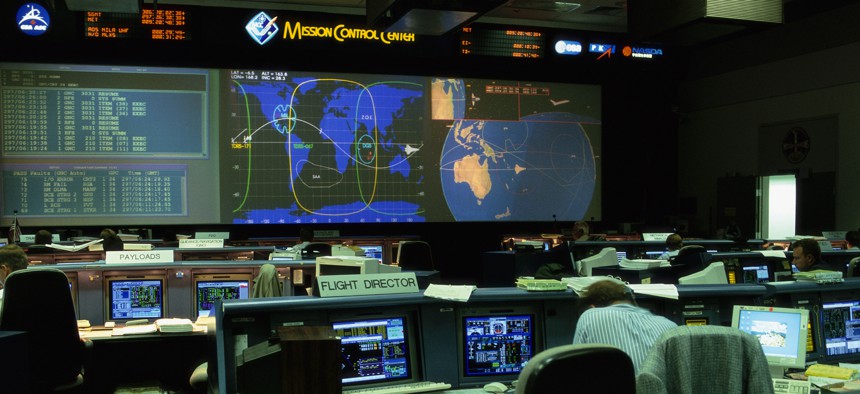NASA drops draft for SEWP VI

Gettyimages.com/ Bo Zaunders
The next iteration of this popular government-wide contract vehicle for IT products is in the works, while SEWP's main architect Joanne Woytek hints at her eventual retirement.
NASA has released the draft solicitation of its sixth iteration of its wildly-successful SEWP contract vehicle, through which government agencies acquire IT products.
The release of the draft is a milestone in itself as the architect of the Solutions for Enterprise-Wide Procurement program dropped a bit of news herself.
SEWP VI will be its program director Joanne Woytek's “last hurrah,” as she said in a Facebook post Friday afternoon.
But don’t start planning the retirement party just yet. Woytek explained to Washington Technology that she wants everyone to know that she will be around through the early part of SEWP VI.
“I am not formally committed to a specific retirement plan yet,” she said.
Woytek, who has led the SEWP program since its launch in 1993, said she has another goal in mind as well – 70 and 50. That signifies 70 years of age and 50 years of government service. She has a few more years to go to reach those goals.
SEWP V is a success story that she can tell. Agencies have obligated $50.3 billion in orders against the current SEWP V contract since it opened for business in 2014, according to GovTribe data.
What is in SEWP VI?
You can read the draft request for proposals here. NASA is also planning an Oct. 18 industry day at the College Park Marriot Hotel and Conference Center in College Park, Maryland.
NASA expects the final solicitation to come out in February, with proposals due 60 days later. Awards should follow in October 2024 with a contract start date of May 1, 2025.
Agencies can continue to order through SEWP V until April 30, 2025.
The competition will have three phases. Bidders have to pass each phase in order to move on to the next phase and ultimately receive a contract.
Phase one is pass/fail and focuses on certification and mandatory experience. Certifications include ISO-9001 and CMMI certification.
Mandatory experience includes what the draft describes as Category A technologies: IT computer systems, storage devices, compute facilities, networking technology, cloud computing technology and product-based services.
The first phase is strictly a pass/fail exercise to advance.
Phase two looks at past performance. Bidders will get a neutral, moderate, high or very high level of confidence.
Phase three will require those still in the running to receive high confidence in mission suitability and high confidence in management approach and technical approach to be selected for an award.
Large and small businesses also have different evaluation criteria for the size of the projects that are submitted as past performance examples.
Large businesses will submit examples that have an annual value of $2.5 million.
Small business must have a value of at least $500,000 for work in Category B areas that include IT managed services, enterprise-wide network services and other enterprise-wide offerings.
Category C work examples must be valued at least $1 billion. Those will cover network services, innovation services, data analytics, cybersecurity and cloud computing.
Comments on the draft are due Oct. 2.
It doesn’t appear that NASA has set a ceiling on the number of awards it will make.
In her post, Woytek was proud of SEWP and her track record. She said the vehicle may reach $12 billion in sales this year with 35,000 federal customers. The current iteration of SEWP has 144 awardees, who sell the products made by rthousands of technology companies to federal agencies.
SEWP’s home is NASA but that agency isn’t the largest user of the contract vehicle, GovTribe data indicates.
In fact, NASA isn’t even in the top 10.
The No. 1 spot is held by the Department of Veterans Affairs, which has obligated approximately $10 billion against the current SEWP V contract that kicked off in 2014.
VA accounts for approximately 19% of the total obligations to-date
After the VA, the remaining Top 10 spenders are:
- Navy -- $4 billion
- Justice Department -- $4 billion
- Air Force -- $3 billion
- Treasury Department -- $3 billion
- State Department -- $3 billion
- Army -- $2 billion
- Health and Human Services Department -- $2 billion
- Defense Health Agency -- $2 billion
- Homeland Security Department -- $1 billion
NASA is 14th on GovTribe list's with $941 million in obligations.


